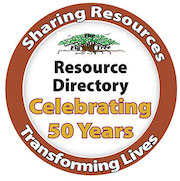NW alliance media salon looks at racism in media
As part of its efforts to educate people on media responsibility, the Northwest Alliance for Responsible Media (NWARM) recently held a “Media Salon” discussion on “Media and Racism,” looking at how media portray Muslim, immigrant and African-American communities.
 |
Admir Rasic, Wilma Cartagena and Sandy Williams discuss bias. |
NWARM board member Ben Cabildo, program director of Community-Minded Enterprises, said attacks on multi-ethnic communities are nothing new. For example New York Tribune editor Horace Greeley attacked Chinese immigrants, who built railroads across the United States, saying they were “unclean” and must go, Ben said.
“Each wave of immigrants has been criminalized and dehumanized,” he said. “Media attacks have often been followed by attacks by mobs. Given that history, I am concerned about what I am now hearing in media.”
Another NWARM Board member, Heather Crandall, on the faculty of the master’s program in communication and leadership studies at Gonzaga University, said, “Media teach us what to consume, what to value, how to vote, and what to believe about ourselves and others. Media teach us to internalize racism, so it’s important for us to understand the effect of media on our culture.”
Raymond Reyes, associate academic vice president and chief diversity officer at Gonzaga University, facilitated discussion by a panel that included Sandy Williams, editor of The Black Lens; Wilma Cartagena, president of the Club de Latinas de Spokane, and Admir Rasic, a Muslim in Spokane for 16 years and a member of the Spokane Interfaith Council and the Spokane County Human Rights Task Force.
Raymond reminded that “courageous conversations can create caring communities.” He asked panelists to describe current conditions of media coverage of their race and religion.
Sandy then told how Malcolm X said in 1964 that media made a criminal look like a victim and a victim look like a criminal, so “we hate people who are oppressed and love the oppressor.”
She is frustrated by images of black people in Spokane media. Blacks make the news if they are criminals, athletes or entertainers.
“We need a different view of blacks. In the 1990s, there was the African American Voice,” she said, telling why she started The Black Lens.
She listed some ways media portrayal of African Americans is distorted.
• Media underreport positive news on African Americans.
• Media cover negative news on African Americans and make negative associations.
• Media use problems to frame the view of blacks, showing blacks on welfare or dropping out of school.
• Media miss stories about black people’s lives and talk about statistics.
A report on news coverage in New York City by four major news channels revealed over-reporting the racial identity of black crime suspects, she said.
“Repeated exposure to unbalanced reporting reinforces cultural biases and creates a hostile environment,” she explained.
The first issue of The Black Lens in January 2015 looked at the police use-of-force report after Spokesman-Review coverage said use of force was not racially biased.
“I thought that was good, but I read the report, and it said blacks are 2 percent of the population but 10 percent of those involved in use of force cases,” said Sandy, seeing a racial bias in those statistics.
Wilma, who now lives in Wenatchee, said “invisibility is a factor for people of color and immigrants. I’m a Latina, but not an immigrant, because I’m Puerto Rican. I was born a U.S. citizen. I have an accent and I’m brown, but I’m a U.S. citizen.”
Many assume she must be from Mexico, Central or South America, and must be illegal.
“There is no such thing as ‘illegal.’ That term erases people who are undocumented,” she said.
“I’m acutely aware of what it is to walk in a brown skin. We are invisible in media. There are no Latino reporters,” she said.
“People with brown skin are seen as a group to demonize and dehumanize,” she said.
“I do not agree with assimilating. It erases culture. In media, I do not see anyone who looks like me. It erases me. We need to challenge assumptions that come from media,”Wilma said.
Admir said Islam is covered more than any religion, but it’s in a negative way. American Muslims are especially underrepresented. We need to see more coverage of Muslims who act positively. Since Sept. 11, coverage has been high, but 92 percent is negative. The 25 most common terms media outlets use for Muslims are negative, he said.
“How does it happen? Right wing hate groups endorse Islamophobia. Negative coverage shapes perceptions of Islam and Muslims, and leads to mainstreaming hate. Islamophobia leads to hate attacks,” Admir said.
“I am a peaceful person and oppose wars, but when I state my opposition to the U.S. military intervention in Iraq, my American patriotism is questioned. I’m quiet, yet Muslims are viewed with suspicion,” Admir said. “Muslim rights are human rights. We need media to serve us,too.”
Media Salon discussions help members of the community understand dynamics of media coverage and how they impact people and communities.
NWARM is a regional center for excellence in media, presenting educational events to inform people how media shape attitudes, values, beliefs and behaviors.
For information, call 313-6491 or email crandallm@gonzaga.edu. CMTV’s video on the panel will be shown on Channel 14, at 8 a.m., 2:30 and 5 p.m. Tuesdays, and at 10 a.m., 3 and 6 p.m. Saturdays.
Copyright © June 2016 - The Fig Tree






